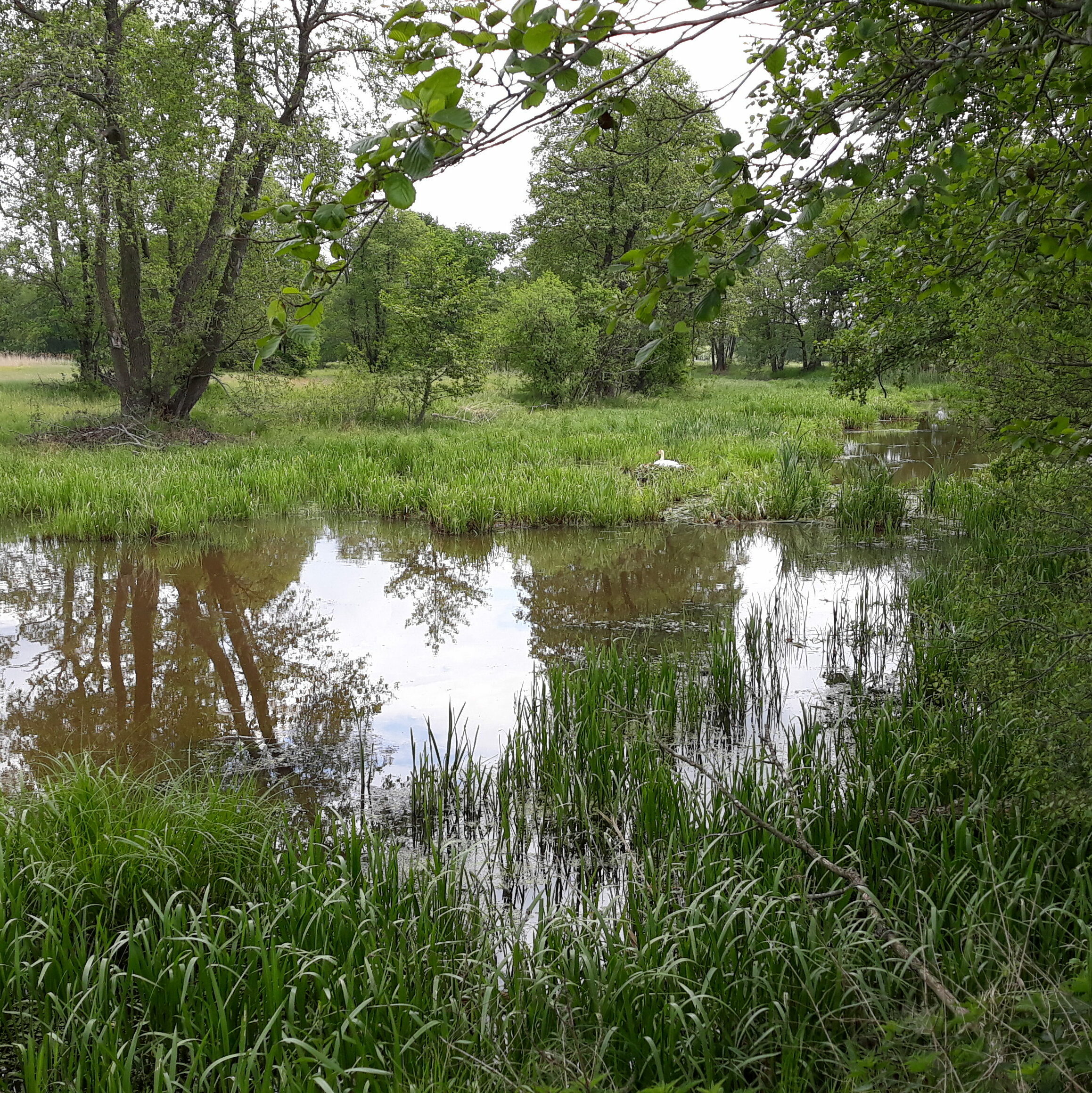Situated between two adjoining river valleys, I/S Faurgård is a third generation crop and livestock farm run by Ole Lyngby Pedersen and his brother Per. In 2008, their land turned into a testing ground when Ole participated in the LIFE AGWAPLAN project* and ended up pioneering one of Denmark’s first constructed wetlands.
“It started with the idea of a ‘winter wet meadow’ but ended up as a constructed wetland ... approximately 20 metres wide and 140 metres long,” recalls Ole.
| *The LIFE AGWAPLAN project was led by the Danish Agricultural Advisory Service during the years 2005–2009, with the aim of demonstrating and quantifying the impact that good agricultural practices (GAPs) have on the reduction of nutrient content on surface and groundwater. |
Constructed wetlands, also known as subsurface flow constructed wetlands, are receiving an increasing amount of attention worldwide for their ability to act as natural wastewater treatment plants – effectively reducing concentrations of nitrogen and phosphorus from wastewater. Measurements from the pilot project Ole took part in showed an average reduced nitrogen loss of 25% and an average reduced phosphorus loss of 40–50%.
Only cooperation between authorities, researches, advisers and farmers will help us find solutions for reducing the environmental impact of agriculture.
Ole was so enthusiastic about the results, he went on to establish a second constructed wetland. While the first wetland was constructed using wood chips, this time it was established successfully with an open basin.

The two wetlands pioneered on I/S Faurgård have had such a big impact on agricultural practices in Denmark, they have inspired the adoption of a nationwide subsidy scheme for constructed wetlands. The objective
is to establish 1,000 to 2,000 construct ed wetlands in Denmark by the end of 2021.
Today, Ole has become a vital actor in promoting awareness of constructed wetlands and their benefits — sharing his experience by hosting educational field trips, giving talks, and contribut ing to informational videos, articles, books and brochures. "Only cooperation between authorities, researchers, advisers and farmers will help us find solutions for reducing the environmental impact of agriculture," says Ole.
In addition to constructed wetlands, Ole utilizes other key practices for the reduction of nutrient runoff, such as fertilizer plans and accounts, and the strategic use of slurry and catch crops. But Ole is far from finished implementing new measures on his farm – this year he plans to experiment with saturated buffer zones.
“Everyone can make an effort on their farm,” says Ole. “I can only recommend to all my colleagues to map their land and identify possible actions and measures. For advice, having a catchment advisor is a great help.”
In 2018, Ole Lyngby Pedersen received the national Baltic Sea Farmer of the Year Award in recognition of his efforts to reduce nutrient runoff on his farm.
FARM FACTS
- Location: Odder in central Denmark
- Type of farm: Conventional crop and livestock farm (250 ha)
- Main production: Pigs, cereals, winter rapeseed and grass seed
- Key practices: Constructed wetlands and constructed wetlands with woodchips, saturated buffer zones, fertilizer plans and fertilizer accounts, catch crops, drainage system mapping, soil testing, nitrate testing
- National jury motivation: “Ole Lyngby Pedersen and his constructed wetlands have been the site of numerous visits, excursions and field trips with big turnouts and acknowledgement. His engagement and measures have formed the basis of many fruitful discussions and helped inspire others to establish constructed wetlands. Ole is a really good ambassador and always invites all kinds of people to see what he is working with in the environmental field – a good way to spread information.”

